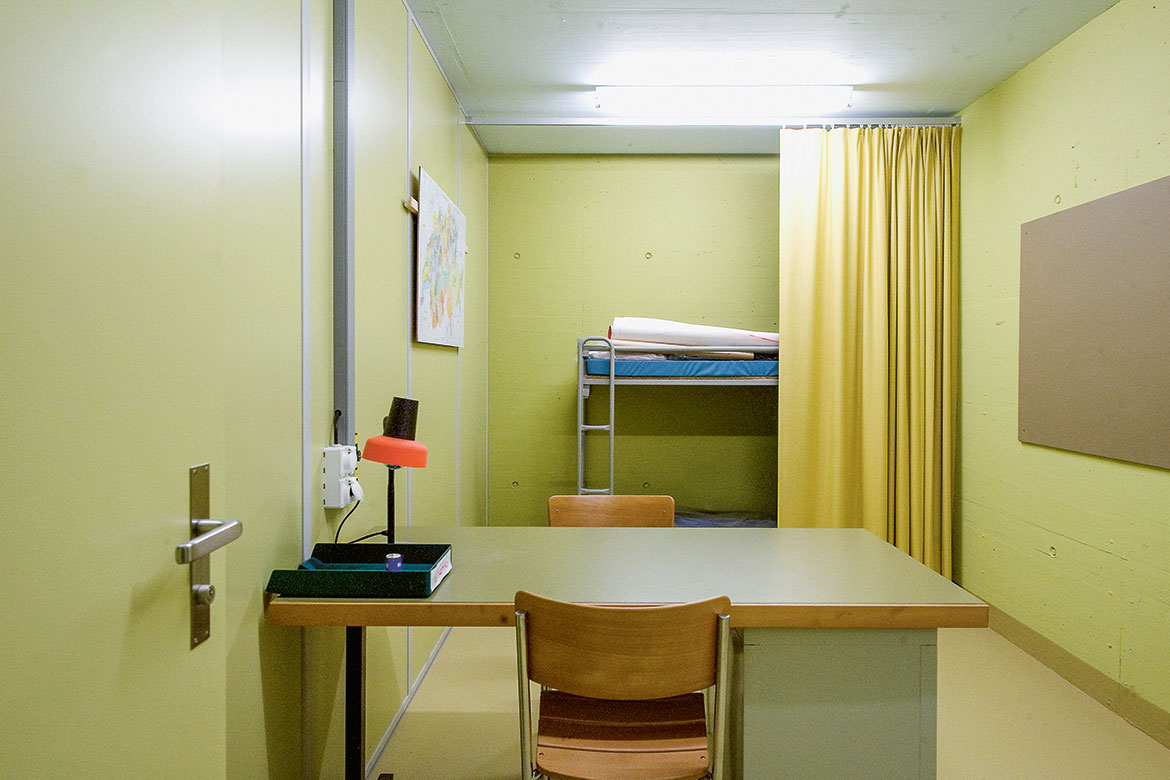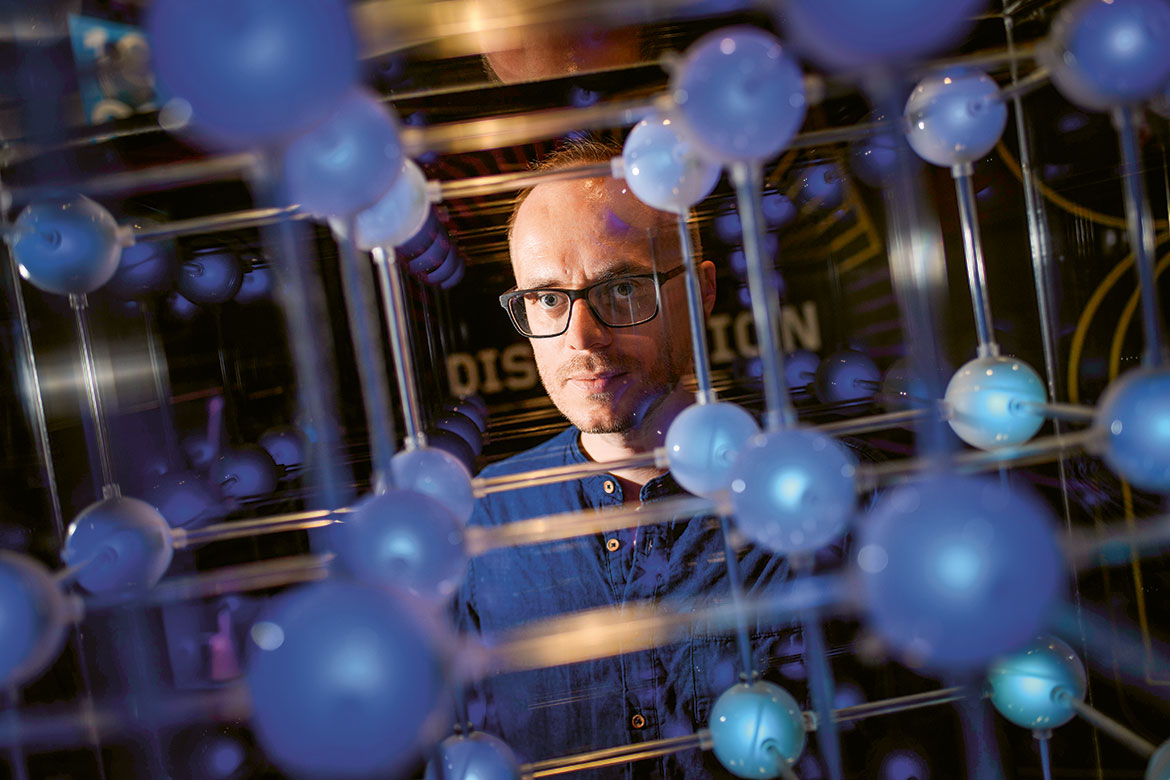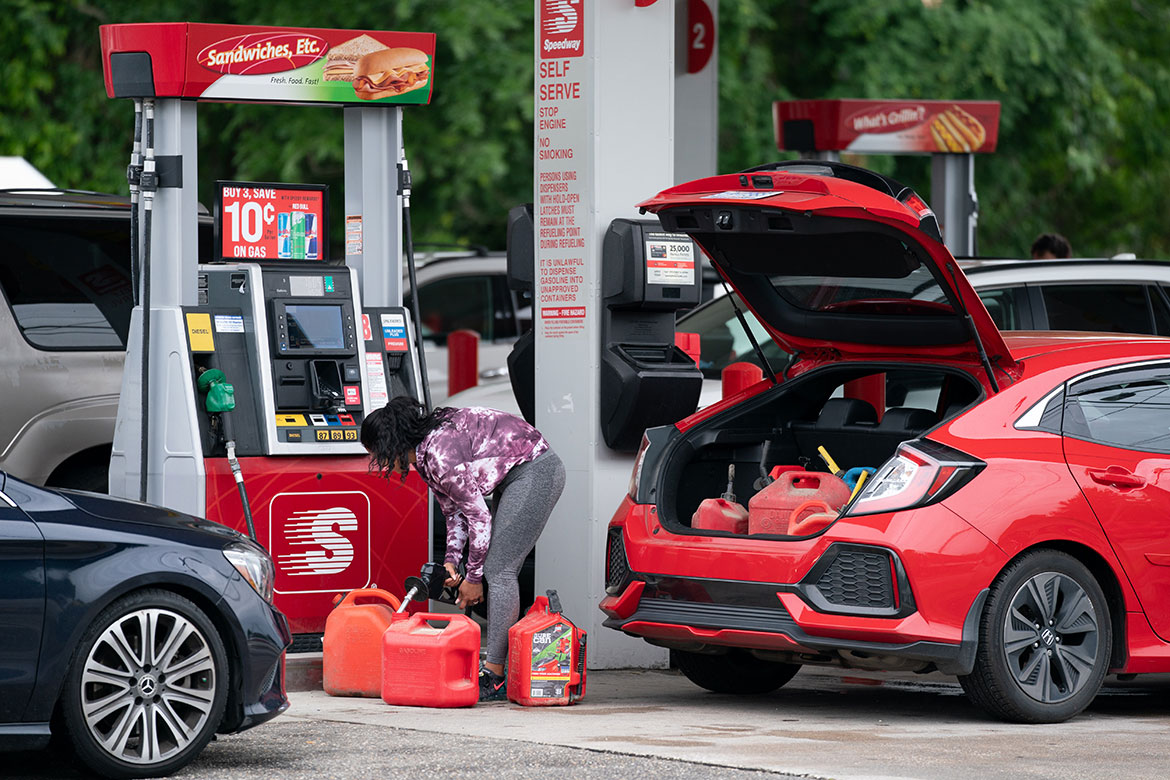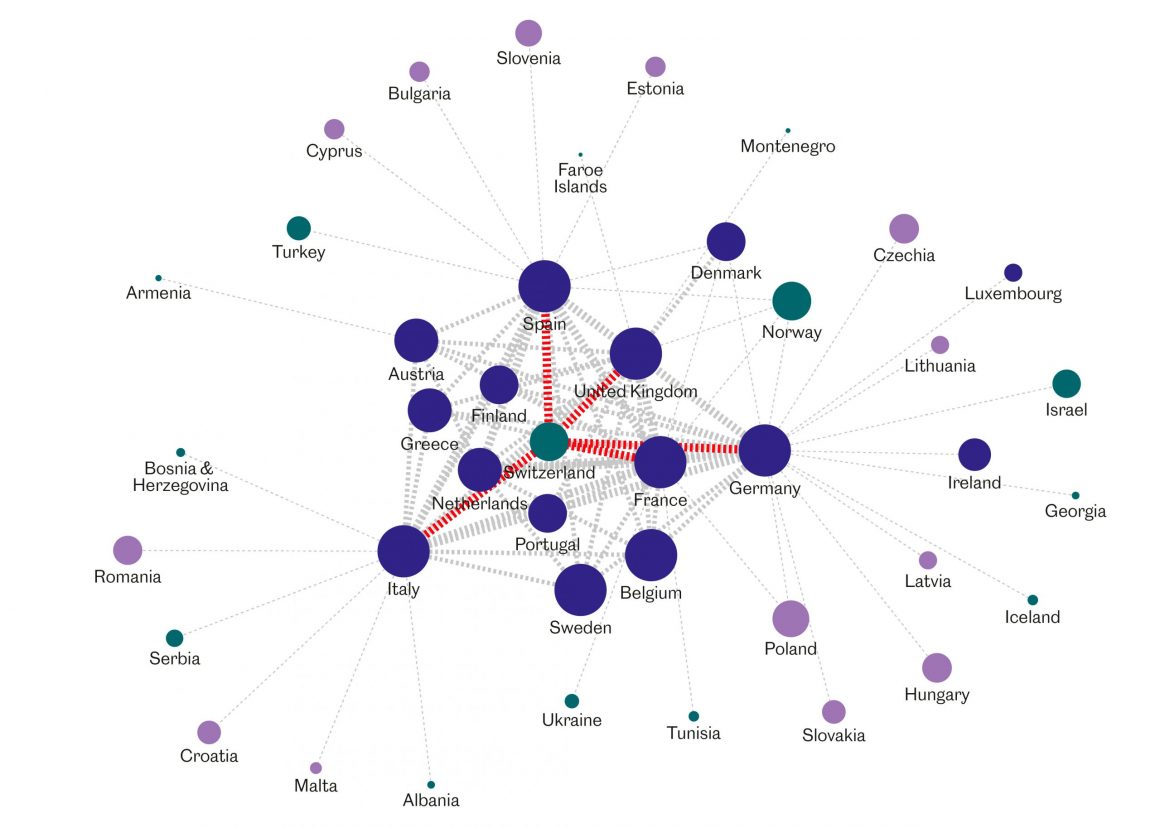Why Switzerland loves its bunkers and tunnels so much
Underground: the places where the Swiss store memories, myths and a part of their identity. We take a guided tour with the geographer and science fiction author André Ourednik.

Salvation under ground: bomb shelters were a feature of Swiss life in the 1970s and ’80s, just like the National Redoubt had been in the 1940s. | Image: Valérie Chételat.
The network of tunnels that crosses the depths of Swiss territory is of epic proportions and legendary influence. Indeed, the country has a uniquely passionate relationship with its subsoil: from its railway tunnels and wine-tasting cellars (‘carnotzets’) to the strategic military network known as the ‘National Redoubt’. Wanting to know more about these physical and imaginary relationships, Horizons spoke with André Ourednik, a geographer specialising in living spaces and a lecturer at EPFL and the University of Neuchâtel. Ourednik was born in what is today Czechia, and also writes science fiction novels that regularly feature subterranean worlds.
How do you see Switzerland’s relationship with its subsoil?
First of all, there is an identity aspect: a part of the national identity has been built up in connection with the Swiss ability to dig tunnels. A lot of attention is paid to the fact that our tunnels are the longest. Even though that’s not technically true: the Gotthard may be the longest people-carrying railway tunnel that passes under mountains, but the longest tunnel is the Guangzhou (aka Canton) metro line 3 in China. It’s just nobody here admits it and the Chinese don’t care, precisely because tunnels don’t form part of their national myth.
The Swiss obsession with tunnels obviously has economic aspects. There is know-how to export and a market value to prove. As with the underground nuclear fallout shelters during the Cold War, it was partly the result of the cement industry lobbying parliamentarians for their mandatory construction.
During the Second World War, the Swiss population was convinced they would end up in the National Redoubt. Mistakenly …
There is a double imagery connected to the world underground. On the one hand, since the time of the Sumerians it has been the home of the dead, a place where only gods and heroes survive: Gilgamesh, Amon Ra, Orpheus... On the other hand, there is a positive image of the underground world as a place where we preserve ourselves, as a place of gestation from where a renewed society can emerge when the conditions above ground are once again favourable. In everyday terms, this image comes to life in Switzerland’s traditional carnotzet, a furnished wine cellar for hosting social events, where individuals can work on themselves, at the same time cut off from the outside world and surrounded by a group of friends. It’s a place where Swiss people build their inner characters. Yet the excessive recourse to this behaviour leads to a particular form of claustrophobia observed on board submarines and anywhere people are confined together for long periods: irritability, obsessive disorders, paranoia. This is the trap of the never-ending carnotzet ...
Following on from the Alpine tunnels, the National Redoubt and the plethora of fallout shelters, Switzerland is continuing to privilege its subsoil with renewed vigour today in the form of data storage.
Switzerland is currently positioning itself on the data-security market. For example, the Ticino-based company Dataverna bought up part of the service tunnels bored during the construction of the Gotthard Base Tunnel, and has since installed its computer servers there.
The term ‘data mining’ has been used for some time to describe the exploration and exploitation of data. It’s as if this metaphor is becoming reality.
From one point of view, it would indeed seem that the physical world is falling neatly into the boundaries of the metaphor. But seen from another angle it portrays a material attachment to objects, imbued with an ancient imagination and past customs, that endures and even determines our way of thinking. This is the case with everyday objects: for example, the layout of a computer keyboard results from the physical constraints of the typewriter, whose hammers would entangle when certain letters were set too close.
Through the material properties of objects, therefore, old social practices are continually imprinted in our minds and behaviours. The impact of this imprinting is typically observed with tunnels. I worked for the PostCarWorld project at EPFL, exploring the hypothesis of a car-free world. We recognised that the new tunnel for cars in the Gotthard – voted for in 2016 – will in some way condemn us, if the tunnel is to be profitable. We voted for the tunnel because we drive cars, and we will continue to drive long distances because the tunnel has become a reality. The logic specific to our ancestors that led to bore holes under the Alps in the first place is now to be found everywhere in our practices because it makes up part of our physical environment.
This brings us to one last important aspect of the imagination of the underground. The world may change, but matter endures, and anything imprinted in it, buried in the ground, may later therefore reappear.

From the supernatural to the subterranean – the writer André Ourednik explains why the world underneath our feet seems to us both nightmarish and creative. | Image: Alain Wicht/La Liberté.
Like the 7,000 tons of ammunition buried during the Second World War in the Mitholz depot in the Bernese Oberland, which caused a deadly explosion in 1947 and could explode again...
Yes, and like the secret P-26 army documents entrusted to the Swiss Resistance Museum in Gstaad, inaugurated by Federal Councillor Ueli Maurer in November 2017. They are now in the same bunker where the secret army trained. The organisation was established to orchestrate resistance in case of invasion by the Warsaw Pact countries and as such the archives are classified as ‘top secret’ pursuant to a decision of the Federal Council. They will be declassified in 2041. We have not only buried our memory underground, but also our past intentions, and even our battles against a more or less mythical enemy that no longer exists. In the imagination of the underground, all of this can resurface at any moment, like in Emir Kusturica’s film Underground, where – long after the collapse of Yugoslavia – a tank emerges from a tunnel and sets about its battle operations looking for an enemy.
You have explored all kinds of depths in your literary work.
The first time was in my novel Naufrage (Shipwreck), where the characters travel by boat through watery tunnels in subterranean Switzerland. The idea referred to two national mythologies: Switzerland as the connection hub of the Alps, and the National Redoubt, the system of Alpine fortifications designed to ensure the defence of the country during the Second World War.
Another source of inspiration was the 1952 short story by Friedrich Dürrenmatt, The Tunnel. Travelling by train between Zurich and Bern, the protagonist enters a tunnel, time passes, until suddenly he realises an hour has passed and the train has still not come out into the light of day ... In my story, other things also go wrong: part of the wall gives way – a bit as if the ideal of Switzerland was crumbling – and the boat is carried away over a waterfall through the hole à la Jules Verne. The story then takes us into an underground world inhabited by soldiers from all periods of the past, from Arnold Winkelried to General Guisan, who remain hidden and preserved in the National Redoubt.
It’s the same underground imagery that you used in your novel The Maps of the Kraiensky Boyar ...
This is the story of a Swiss cartographer who is sent on a mission to define Europe’s eastern border. The cartographer arrives in the castle of a boyar, somewhere near Ukraine, where he aims to study a collection of old maps so as to establish the exact line of the border. But the maps all contradict each other, not lining up with one another, and then of course the castle is also slowly sinking into the ground …
There are two themes that interest me here. One is linked to a branch of geographic information systems called geodesy, which is used regularly to recalculate the coordinates of a series of points on Earth. The landmarks move relatively quickly: continental drift is as high as 10-15 centimetres per year, which is some two kilometres since the foundation of Jericho. I am fascinated by the fact that even land isn’t permanent, given the movement of tectonic plates. Borders move not only historically but – it appears – also geologically, following this movement of the Earth’s very surface, further implying a fundamental instability of any reference territory.
The other theme is related to the movement of the castle sinking. At some point, the protagonist goes digging in the cellars and discovers that the foundations of the building are macerating in clay. He is then confronted not only with the Earth’s capacity to swallow up the reality that we build upon it, but also with the fact that every form of human project is sooner or later absorbed back into shapeless mud.
You also connect the imagery of the underground and big data.
In my latest novel, Omniscience (2017), we find ourselves once again underground, this time in a cave, where infinite amounts of data are stored in liquid form and where divers weave narrative threads as they swim through this vast pool ... And I also have another novel that is yet to be published. It’s a work commissioned in connection with François Burland’s Atomik Submarine, an 18-metre model of a Soviet naval vessel. It evokes the dread of the Red Army that in the 70s and 80s we feared would invade Switzerland out of nowhere. In my novel, we are once more underground where we meet Gabi I and Gabi II – named after the boring machines that dug the new Gotthard tunnel. They continue to excavate, and no one knows why ... You see, we haven’t finished digging.
Nic Ulmi is a freelance journalist who lives in Geneva.




